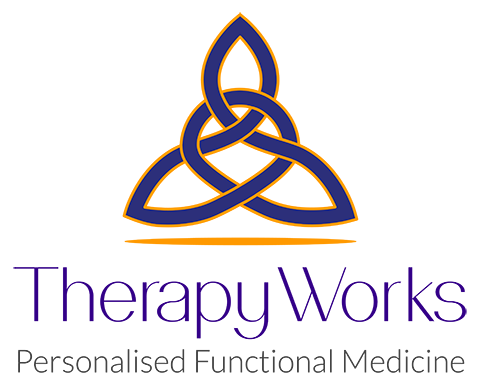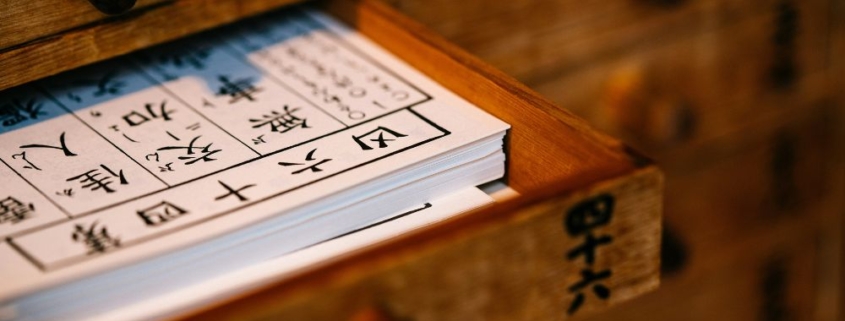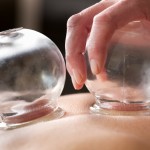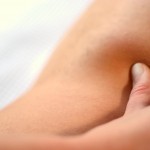What is Traditional Chinese Medicine?
What’s traditional Chinese medicine all about? It’s a time-honoured system originating in ancient China, encompassing internal health practices and treatments. Today, this holistic approach to healing is practised globally.
TCM theory dates back over 2000 years, focusing on energy pathways known as meridians. The core principle revolves around unblocking energy pathways (meridians) to promote the smooth flow of Qi (pronounced chee). It aims to balance the opposing energies of Yin and Yang for optimal well-being.
In this blog we aim to answer the question of what is traditional Chinese medicine and we’ll describe some of the main modalities.
TCM is comprised of multiple therapeutic treatments and practices that are used in tandem, including:
- Acupuncture
- Chinese Herbal Medicine
- Massage (Acupressure/Tui Na)
- Nutritional Therapy
- Gua Sha
- Cupping
- Meditation
- Qi Gong
- Tai Qi.
The principle therapeutic aim for these treatments are to correct imbalances within the body by:
- Harmonising the digestive and waste elimination systems
- Calming and tonifying the nervous system
- Boosting the immune system
- Regulating gynaecological and urinary function
- Reduction of pains throughout the musculoskeletal system.
YIN and YANG
In TCM theory, much attention is focused on Yin and Yang. These are the two primary energies in the body that represent the polar opposite energy forces within us; they are two sides of the same coin. Yin and Yang are in a constant state of change, constantly influencing each other.
Below is a table illustrating some of the characteristics attributed to Yin and Yang energy.
| Yin is considered to be… | Yang is considered to be… |
|---|---|
| Dark | Light |
| Downward and Inward | Upward and Outward |
| Static (stillness) | Dynamic (movement) |
| Cold | Hot |
| Rest | Exercise |
| Sleep | Awake |
The fundamental principle of TCM practice is to regulate the flow and transition of these two energies from one to the other, and ensure a balance of the two in the body. True health can be defined as a healthy balance and interaction between these two energies.
Acupuncture
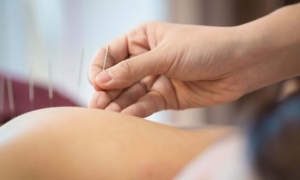
The most well known and widely used treatment within TCM practice is acupuncture. The earliest recording of acupuncture is seen on the Ma Wang Dui silk scrolls dating back to 187 BCE.
These silk scrolls discuss the use of stone “needles” used to prick and bleed points running along the meridians of the body to affect the internal balance of Yin and Yang energies in the body.
Traditionally acupuncture is described as the insertion of very fine needles into acupoints along the energy meridians to stimulate the body’s Qi and restore balance of Yin and Yang energy. It is believed that the blockage, excess or deficiency of Qi is the root cause of disharmony within the body. Qi is best thought of as being similar to water, it likes to move and flow and if it stagnates, it becomes murky and toxic.
Modern-day acupuncture is practised using the insertion of high-grade surgical steel disposable needles into specific points (acupoints) along the meridians of the body to influence the energy within. It is a clean, precise and relatively painless procedure that can yield great benefits.
Commonly helped conditions
Acupuncture is often used to help control chronic pain. It may be useful if you have lower back pain, neck pain, shoulder pain or knee osteoarthritis pain.
There is also evidence for the use of acupuncture to treat:
- acute pain — such as tendinitis, tennis elbow or sciatica
- toothache
- tension headaches and migraines
- anxiety and depression — alongside prescribed medicines
- menstrual pain, pregnancy and fertility related issues
- nausea and vomiting
- Insomnia
- allergies and common cold symptoms — such as itching, sneezing and runny nose.
Therapy Works uses only sterile single use Acupuncture needles in the clinic.
Interestingly, one area of health in which acupuncture is gaining a lot of professional interest is fertility issues and IVF support.
According to the Chinese Medicine Board of Australia: “Many health practitioners may recommend acupuncture as an adjunct treatment that may assist with IVF treatment. There is continuing research about how acupuncture can assist with the effectiveness of IVF treatment and you should consult your treating practitioner/s about how acupuncture may be able to help you.”
Read more about our natural IVF support programs here.
Chinese herbal medicine
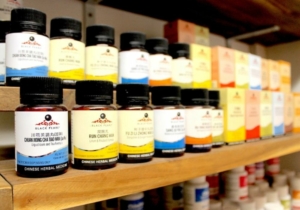 Chinese herbal medicine (CHM) pre-dates acupuncture treatment in China. Many ancient civilisations have recorded history of using plant and animal material for medicines and restorative purposes.
Chinese herbal medicine (CHM) pre-dates acupuncture treatment in China. Many ancient civilisations have recorded history of using plant and animal material for medicines and restorative purposes.
In fact, CHM has a recorded history of more than 2500 years and has been extensively studied and used successfully for all this time. The traditional method of preparation involves boiling the bulky plant and mineral material in a clay pot until a reduction of concentrated medicinal compounds are produced and consumed by the patient.
Furthermore, this substantial and supportive modality works at all levels to support the body – physically, psychologically and emotionally. It is a profound discipline, beyond pure pharmacology, that holistically embraces the whole system, considering all aspects.
Our modern lifestyle of time constants has moved CHM into a new era in which these formulas are pre prepared and formed into dried granules, pills and capsules for easier dispensing and consumption without compromising on efficacy.
Read more about our Chinese herbal medicine service here.
Massage (acupressure/tui na)
Acupressure and tui na are therapeutic massage techniques within traditional Chinese medicine.
Acupressure involves applying pressure to specific acupoints to stimulate energy flow and relieve pain, tension and discomfort.
Whereas Tui na encompasses a broader range of manual techniques, including kneading, tapping and stretching, to address musculoskeletal issues and promote overall well being.
Similarly, both methods focus on enhancing the body’s self-healing abilities by clearing energy blockages and improving circulation.
Nutritional therapy
Nutritional therapy, within Traditional Chinese Medicine, highlights the crucial link between food and health.
Practitioners provide personalised dietary advice, aligning food choices with individual constitution and health needs.
By emphasising food’s role in restoring balance and leveraging seasonal eating, this practice aims to enhance well-being and prevent ailments.
Integrated with both Chinese and Western medicine, it acknowledges the profound connection between food, energy, and overall health, forming a pivotal part of a holistic healing approach.
Gua sha (scraping)
Gua sha is a technique that involves the repeated movement of scraping a smooth-edged implement repeatedly over lubricated skin and muscles to encourage the blood to the surface. This technique is believed to promote blood circulation, release tension and alleviate muscle pain.
The scraping action creates temporary bruise-like markings on the skin, which are believed to be a sign that the process is clearing stagnation and toxins, promoting overall health and healing.
Furthermore, Gua sha is a widely accepted practice for pain relief and has gained recognition for its therapeutic benefits in various cultures around the world.
Cupping
Cupping is a traditional Chinese therapy that employs glass or plastic cups to create a vacuum over the skin. This technique promotes blood flow, relieves muscle tension and enhances the body’s natural healing processes.
The cups are placed on specific acupoints, and the resulting suction is believed to help release energy blockages and toxins, restoring balance and promoting wellbeing. The suction of the cups can leave large, round bruises on the skin, but these are usually not painful and will fade after a few days.
Cupping therapy has been embraced as a complementary treatment for various conditions, including pain, respiratory issues and stress.
Meditation
Meditation is an integral part of traditional Chinese practices, aiming to foster mental clarity, emotional balance and inner peace. By cultivating mindfulness and relaxation, individuals can reduce stress, enhance focus and gain better control over their emotional and mental well-being.
Meditation techniques can include breath control, visualisation, and mantra repetition, and they are often incorporated into daily routines to promote holistic health.
To demonstrate, research from outside the sphere of TCM has shown that meditation is beneficial for mental and physical health.
Qi Gong
Qi Gong is a broad practice that combines gentle movements, breathing exercises and meditation to enhance the flow of Qi, or life energy, within the body. This holistic approach helps individuals harmonise their physical, mental and emotional aspects, promoting health and longevity.
Qi Gong exercises are designed to clear energy blockages and strengthen the body’s vital energy, fostering overall well-being and vitality. This practice is embraced as a way to maintain health, prevent illness, and cultivate a deep sense of balance and harmony.
Tai Qi
Tai Qi, or Tai Chi, is a graceful and slow martial art form that combines gentle, flowing movements with deep breathing and meditation. This practice promotes physical balance, flexibility and relaxation.
Regular Tai Qi practice helps individuals improve their physical and mental health while enhancing their overall wellbeing.
By focusing on smooth and deliberate movements, Tai Qi cultivates mindfulness and strengthens the body, making it an especially popular choice for people with limited mobility or strength.
What is traditional Chinese medicine?
Have we helped to answer this question for you?
In essence, traditional Chinese medicine (TCM) embodies a holistic approach, rooted in ancient wisdom and encompassing diverse practices. Its focus on balance, energy flow, and harmony within the body offers a time-tested pathway to holistic well-being and vitality.
Read more about our Chinese medicine practitioner Dr. Natalie Dalton (TCM) here.
- What are Acupoints? - 12 December 2023
- What is Complementary Medicine Used For? - 20 August 2022
- Auriculotherapy Ear Acupuncture - 21 July 2022
